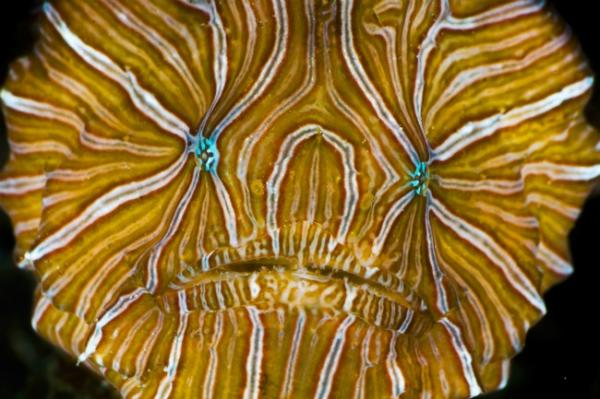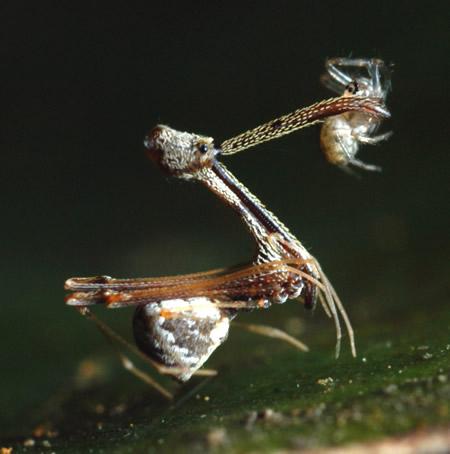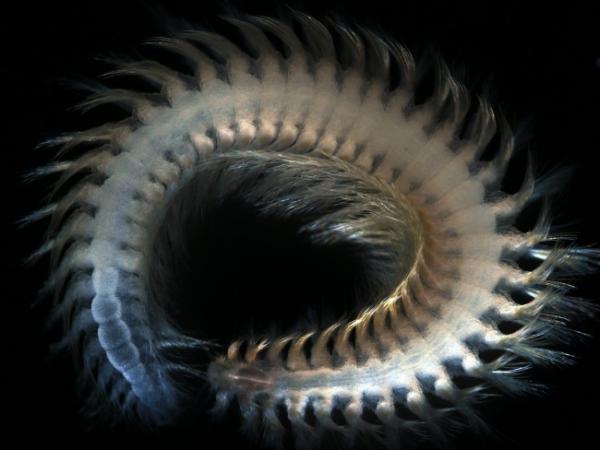
Quest to Count Earth's Species Hits New Number

How many species live on planet Earth?
For centuries, the question has tantalized scientists, a taxonomic jar of jellybeans waiting for some brave soul to step right up and answer. Many have offered informed guesses, yet none have claimed victory. Estimates have ranged wildly, from about 2 million to as many as 100 million.
Enter scientist Camilo Mora, a man who says he thinks he and his colleagues may have found the answer: 8.7 million species. (Give or take 1.3 million.)
"That's plants, animals, bacteria every single species known to exist on planet Earth," said Mora, an assistant professor at the University of Hawaii. (Viruses, which are tricky to classify, were not included. "We don't know if they have species or not," Mora said.)
Mora and his colleagues at Canada's Dalhousie University arrived at their estimate using a model that crunched the new numbers. Their work was published in a paper online in PLoS Biology this week.

Precise numbers
Of the 8.7 million species the model predicts, roughly 6.5 million dwell on land, and 2.2 million live in the sea . To put those numbers in context, in the 250 years since Swedish botanist Carl Linnaeus developed the basic classification system we now use, humans have, so far, catalogued a comparatively measly 1.2 million species on our planet.
Sign up for the Live Science daily newsletter now
Get the world’s most fascinating discoveries delivered straight to your inbox.
Based on the new model's numbers, that means only 14 percent of the globe's total species have been cataloged. In the ocean, that number drops to 9 percent.
Mora said his team is confident that their results are very precise a proclamation he acknowledged is a bold one, but says he and his team spent a year testing the model, which he insists stands up to even vast new discoveries.
"You'd need to discover something on the order of 20 new phyla for the pattern to change," Mora told OurAmazingPlanet. Phylum is the second tier in the taxonomic classification system after kingdom. Humans and goldfish belong to the same phylum Chordata the category that encompasses all creatures that possess a spinal cord.
"Not a single phylum of animals has been described in decades," Mora said.
An answer that is 'defendable'
From broadest category to most narrow, the taxonomic categories are kingdom, phylum, class, order, family, genus and species. Mora's model essentially looks at mathematical patterns that appear as one descends through the categories, from larger to smaller, using the numbers found in broader categories to predict the numbers found in narrower categories. Follow the model far enough, and you get the total number of species.
Mora said the approach can be tested and validated by looking at well-studied groups, such as birds and mammals groups that are cataloged in great detail, and for which it's likely there are comparatively few species left that still elude discovery. Plug in what we know about these groups, and the model holds up.
"I like this paper very much. It was an imaginative new way of coming at the answer," said Oxford University's Robert May, a scientist who has been seeking to answer the question of how many species for decades. "It's largely independent of the other methods and it gives you an answer that is defendable." May wrote a commentary that accompanies the paper, but was not involved in the study.

Lowballs and curveballs
The model did produce some surprises. "I was quite amazed that, when we apply our method, there are only 10,000 species of bacteria ," Mora said. That seems a low number for one of the most plentiful residents of the planet, but one that Mora says makes sense upon a closer examination of bacteria biology.
Because bacteria can swap genes with relative ease, they haven't developed the highly differentiated species of, say, insects and birds. If you tried to crossbreed a bug and a bird, two creatures that have been separated on the taxonomic tree for millions of years, Mora said, it wouldn't work. However, bacteria aren't such reproductive snobs. You could cross rather different bacteria, and something new would come out. "Things have to be separated very long so they can't cross with each other," Mora said, "that's the reason why you have so few species of bacteria."
In addition, the model predicts that only 25 percent of Earth's species are ocean dwellers. Since the oceans comprise some 90 percent of the habitable space on the planet, that proportion may seem low.
"It's fair to say there's more controversy about how many species there are in the ocean than on land, and partly because the ocean is less well known," May said. However, he said, the predicted number, 2.2 million marine species, is not implausible.
May said that some scientists suggest that because the oceans are better connected, it would make sense there are proportionally fewer species there there aren't as many isolated spots, and so fewer species have the opportunity to specialize. Many places on land are geographically isolated, such as New Guinea or Madagascar , and thus possess a riot of unique species.
Unlike those land creatures, whose large-scale movements are thwarted by an ocean, sea creatures can traverse the far reaches of the globe more freely.
But in the end, does it matter how many species live on Earth? Both Mora and May answered with an emphatic "yes." Both scientists highlighted the essential services the world's species provide to humans shelter, medicine, food.
May pointed to the discovery in the 1970s of a kind of wild rice that, when crossed with domestic rice, produced 30 percent higher yields, thus feeding far more people.
"I think both on philosophical grounds and on practical grounds and I'm not wishing to be invidious that it's more important than the search for the Higgs Boson," May said.
Although mammoth machines need not be built to do so, cataloging all of Earth's species will not be easy, the study authors say. If the rate of discovery remains the same as it is today, it will take 1,200 years and $300 billion to accomplish the task, although Mora said he hopes that DNA fingerprinting will speed up the process.
"It's not just a philosophical issue or a stamp collecting issue," May said. "The quest of trying to figure out what is out there is helping us to find better ways of doing the things we do."
- Camera Trapped: Photos of Wonderful Wildlife
- Gallery: Creatures from the Census of Marine Life
- Extremophiles: World's Weirdest Life
Reach Andrea Mustain at amustain@techmedianetwork.com. Follow her on Twitter @AndreaMustain.









